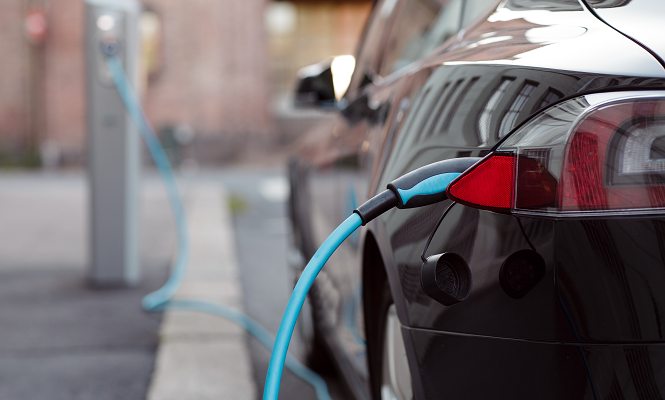Q&A: What is COP26 – and What Does It Mean for Energy Efficiency?
Let's Save Energy
Alliance to Save Energy's Blog
Q&A: What is COP26 – and What Does It Mean for Energy Efficiency?

Thank you to our friends at the Business Council for Sustainable Energy for helping to inform this blog post.
This Sunday, Oct. 31, marks the kickoff of COP26, a global conference on climate change that will bring 30,000-plus government, business, and advocacy leaders from around the world to Glasgow, Scotland for two weeks. There looks to be a few more tricks than treats ahead for negotiations, but hopes are still high for cutting a deal that expands commitments to reduce global greenhouse gas emissions. With many unknowns as to how talks will proceed, here we answer what we can on what to expect, what to look for, and how COP26 could help or hinder the deployment of energy efficiency solutions.
What’s COP and why does it matter?
COP stands for the “Conference of Parties,” the annual gathering of nations that are signatories to the United Nations Framework Convention on Climate Change, which was first signed in 1992. This year’s COP is especially important as, because of a one-year delay due to COVID-19, this is the fifth COP since the Paris Agreement was signed in 2015 and therefore makes it the first deadline for improving emission reduction targets under the agreement. The conference comes amid increasing warning signs that time is running low for serious action on climate change, with two reports released in recent weeks indicating that the world is not on track to meet the Paris Agreement goal of limiting warming to 1.5°C. The International Energy Agency’s special edition of its World Energy Outlook, designed to assist decisionmakers at COP, shows that current policies around the world would allow global temperatures to rise 2.6°C by 2100, and a United Nations report released this week shows that even new pledges made in the run-up to the summit would be insufficient to limit warming to that target. Further commitments made at COP26 could be critical to avoiding the natural disasters, falling biodiversity, threats to global food systems, and national security concerns associated with climate change.
COP26 is particularly consequential for the United States and the Biden administration. President Biden made climate action a cornerstone of his policy platform, yet days before COP kicks off, Congress has yet to send emission-cutting legislation to his desk. While that could change as news reports indicate that a deal is close to being reached on the bipartisan infrastructure framework (BIF) and the Build Back Better budget reconciliation package – both of which include substantive provisions on energy efficiency, clean energy, electric vehicles, and more for cutting emissions – time is running down to the wire.
What will actually happen at COP?
How can a conference change the world? While there will be a number of events and workshops – with topics ranging from promoting gender equality in climate action to youth empowerment – the focus of COP26 will be negotiations on future emission reductions. COP26 delegates will aim to finalize the “Paris Rulebook” to set concrete plans for meeting Paris Agreement targets, with more than 100 world leaders expected to participate. The U.S. delegation will include President Biden, a number of cabinet members and senior administration officials, and more than a dozen members of Congress from both sides of the aisle.
What does COP26 mean for energy efficiency deployment?
Energy efficiency – improving the productivity we get from every unit of energy – is an indispensable tool for meeting Paris Agreement goals on time. The IEA has found that energy efficiency can deliver more than 40% of the emission reductions needed to keep warming well below 2°C. And in the IEA’s October World Energy Outlook, energy efficiency was identified as one of four priorities to close the gap between existing climate commitments and achieving net zero. In fact, the energy intensity of the global economy must decrease by more than 4% per year between 2020 and 2030 to stay on track: more than double the rate of current progress. Without these improvements in efficiency, global energy consumption could be a third higher in 2030, making it significantly more expensive and difficult to fully decarbonize.
Global leaders cannot overlook efficiency’s role at COP26, and there are several efforts at work to ensure efficiency remains central to discussions. The headline event on Nov. 11 will focus on accelerating collaboration for decarbonizing the built environment, and an event that afternoon will look at buildings’ role as a critical climate solution for cities. Additionally, several private-public partnerships aim to advance efficiency as a solution; for example, the IEA’s COP26 Product Efficiency Call to Action seeks to set countries on a trajectory to double the efficiency of key products such as lighting, A/C, and refrigeration by 2030, and the Climate Group’s EP100 initiative will raise awareness of how businesses can commit to improving energy productivity.
While no one knows exactly what will get done at COP26, it’s clear that the next few weeks could be a climate turning point. Meaningful action could spur more domestic and international work on rapidly deploying energy efficiency solutions to cut emissions and boost energy affordability. And inaction is, frankly, not an option for the planet. We’ll be watching closely.
RECENT BLOG POSTS
STAY EMPOWERED
Help the Alliance advocate for policies to use energy more efficiently – supporting job creation, reduced emissions, and lower costs. Contact your member of Congress.
Energy efficiency is smart, nonpartisan, and practical. So are we. Our strength comes from an unparalleled group of Alliance Associates working collaboratively under the Alliance umbrella to pave the way for energy efficiency gains.
The power of efficiency is in your hands. Supporting the Alliance means supporting a vision for using energy more productively to achieve economic growth, a cleaner environment, and greater energy security, affordability, and reliability.



